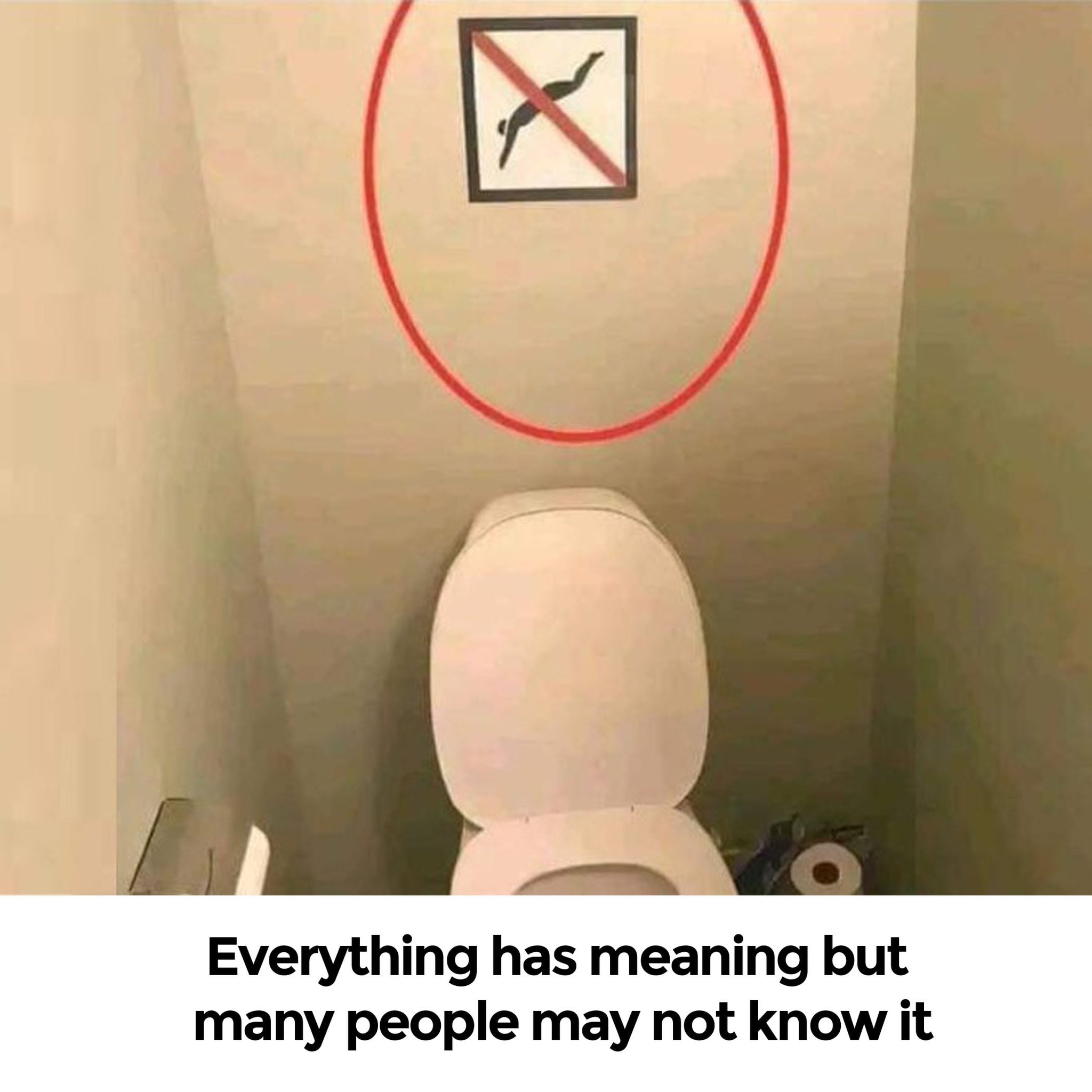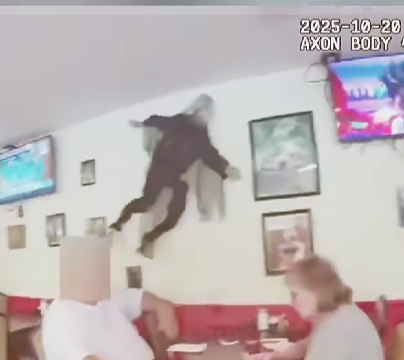Have you ever walked into a bathroom and spotted a diving sign on the wall? At first glance, it’s enough to make you pause and wonder, “Why on earth is there a no diving sign in the toilet?” While it may seem like a misplaced pool warning, this oddly located sign has captured the internet’s attention and become a viral meme, sparking laughter, confusion, and a deeper conversation about context and how we interpret visual cues.

The photo in question shows a standard diving prohibition sign—usually seen near swimming pools to prevent accidents—mounted on a bathroom wall. Naturally, the setting feels wrong. Seeing a diving warning in a restroom, especially near a toilet, sends mixed signals and throws off the viewer’s expectations. But the truth is, this strange placement has nothing to do with swimming or safety and everything to do with a simple mistake that’s now being seen in a humorous light. People online are now dissecting the image, offering explanations and jokes about the accidental hilarity of the situation. While the sign itself carries a clear and serious message when used in the right place, once it’s taken out of that environment, it loses its intended meaning.
It’s a perfect example of how context shapes interpretation. When placed poolside, a no diving sign is clear, necessary, and understood. But put that same sign above a toilet, and suddenly people are making jokes about flushing techniques and bathroom “diving” etiquette. It’s become a playful internet moment, where social media users are enjoying the absurdity of a simple mistake. The core issue here lies in the way we rely on our surroundings to decode the meaning of signs. Signs are designed to communicate specific instructions, warnings, or guidelines. They depend on their environment to make sense. When we see a stop sign at an intersection, we know to halt. When we see a restroom symbol in a mall, we know help is nearby.
But when you place a diving sign somewhere like a restroom, that clear message becomes confusing. The visual still says “no diving,” but our brains can’t reconcile it with a toilet. Some people suggested that the sign may have been left there by accident, while others joked that it’s part of a trend where signs are placed just to avoid liability, even if the warning seems ridiculous. One social media user quipped, “That’s the modern way—warn people about everything. Even if it sounds dumb, you have to say it, or someone will try it and say, ‘Well, there was no sign.’” Others added even more humor with comments like “Don’t let your poo float.
@thetoiley Funny bathroom signs part 48. #bathroomdecor ♬ original sound – TheToiley
Flush it!” and “No diving—unless you want to end up in the ER.” These jokes emphasize how humor often springs from miscommunication or unexpected imagery. But beyond the laughs, this viral moment also provides a lesson about how we navigate messages and meaning. It shows how something as simple as a misplaced sign can generate such different reactions when taken out of its normal environment. In the same way, people in unfamiliar situations or roles may be misunderstood if the context doesn’t match their presence. It reminds us to look a little closer before jumping to conclusions. Maybe that diving sign isn’t warning against a cannonball into the toilet bowl—it’s just a misplaced reminder from another setting. As the photo continues to make the rounds on Reddit, Instagram, and Twitter, people are still sharing it with their own interpretations, from snarky comments to theories about how it ended up there in the first place. The image has become more than just a funny mistake—it’s a social media phenomenon that makes us reflect, laugh, and maybe even think twice about the importance of context in communication. So the next time you see something out of place, whether it’s a sign in a bathroom or a person in a job that doesn’t seem to fit, take a moment to consider that maybe it’s not about the thing itself—but about where it’s placed. Sometimes meaning isn’t lost; it’s just waiting to be understood in the right context.





